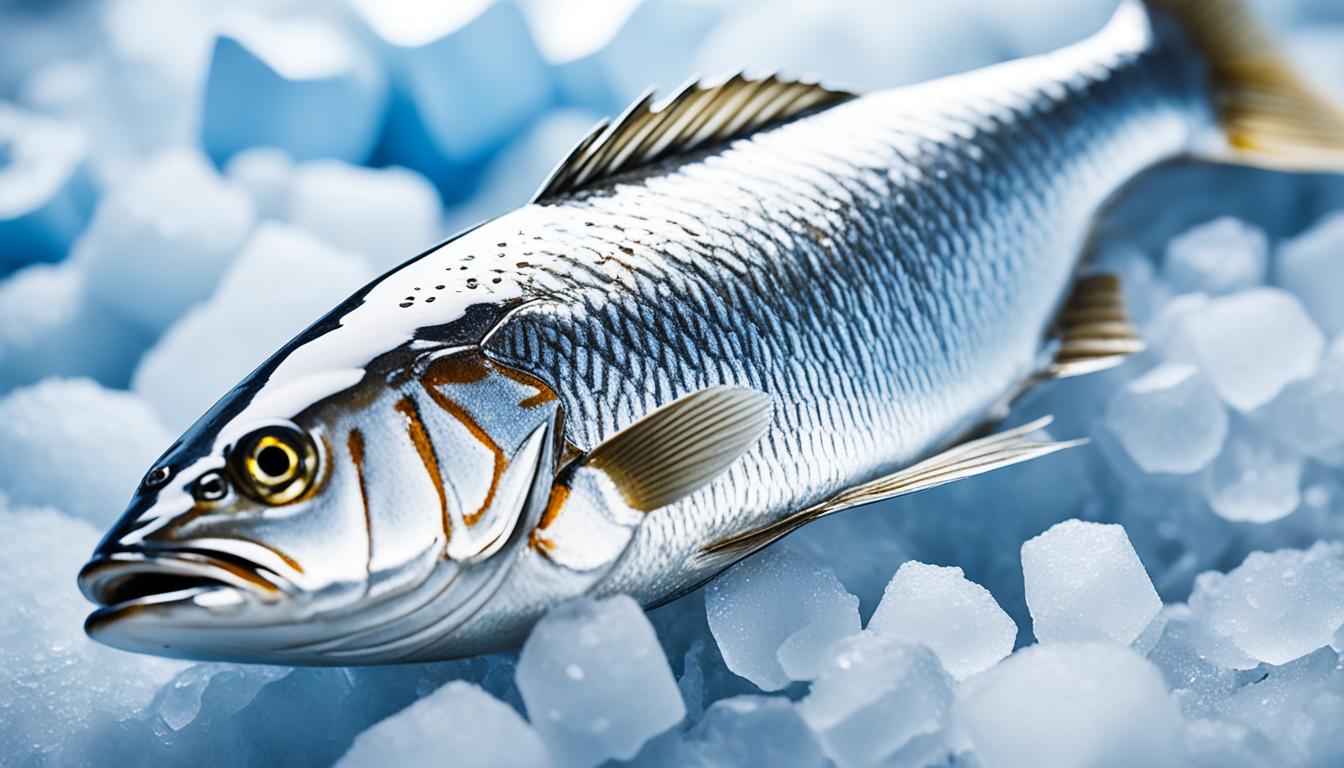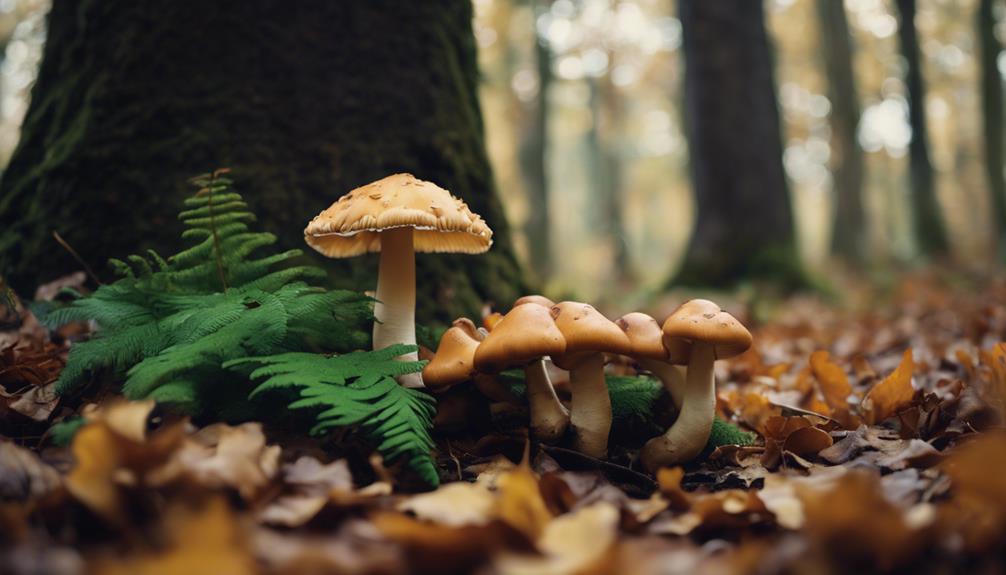The ocean is a world full of secrets and mysteries that draw us in. On my adventures underwater, I’ve been amazed by the hidden treasures waiting for someone daring enough to look. The mysteries below the waves are both enchanting and profound.
Did you know that the ocean covers about 70% of Earth’s surface1? It’s not just a place of beauty and calm but also holds incredible scientific importance. Discovering the ocean helps us understand biological, chemical, physical, geological, and archaeological secrets1. This knowledge helps us learn more about our planet and tackle science and management challenges1.
Diving into the ocean, we find amazing ecosystems and sea creatures. Coral reefs, the ocean’s rainforests, are some of the most amazing and life-filled places on Earth1. They support countless species and are vital for healthy ecosystems. It’s crucial we explore and protect these beautiful, yet delicate, environments for the health of our planet1.
Beyond the reefs, there’s more to discover. Under the ocean floor, there’s a whole world of geology2. We’ve found huge underwater mountains and explored methane seeps and deep-sea corals near the U.S. Atlantic Margin. These discoveries teach us about Earth’s past and its changes2.
In the deep sea, life thrives under extreme conditions. Far from sunlight, creatures survive in cold, high-pressure environments. Exploring these depths broadens our view of life and spurs innovation in technology and engineering1.
But exploring the ocean isn’t just about wonder and discovery. It’s also about facing environmental challenges and recognizing the urgent need for conservation. Learning from the ocean helps us address changes to our environment, weather, and climate1. By understanding the ocean, we can protect this vital ecosystem for future generations1.
Let’s go on a journey together to uncover the ocean’s mysteries and marvels. We’ll seek out the hidden wonders beneath the waves and strive to better understand and protect our incredible underwater world.
Key Takeaways:
- The ocean covers approximately 70% of Earth’s surface and holds immense scientific value.
- Ocean exploration provides insights into biological, chemical, physical, and geological aspects of the ocean.
- Coral reefs are biodiverse habitats and vital for the preservation of biodiversity.
- Underwater geology and seafloor features hold clues to the Earth’s history and ongoing changes.
- Deep-sea exploration inspires technological advancements and engineering innovations.
Biodiversity and Marine Life: Unveiling the Underwater Tapestry
The ocean is alive with countless marine creatures and plant life. It ranges from tiny microorganisms to large marine mammals. This diversity shows just how vast and rich our planet’s oceans are.
Many different species make up marine biodiversity. They play a key role in keeping marine ecosystems healthy and balanced. For example, coral reefs are among the most colorful and diverse ecosystems on Earth.
Coral reefs host a wide variety of life. This includes colorful fish, coral formations, and unique species. Places like the Great Barrier Reef are important for many marine creatures.
“Coral reefs are among the most diverse ecosystems on Earth, hosting a variety of marine life and vibrant colors.”3
But, coral reefs face threats like bleaching and acidification. These challenges harm the health of these ecosystems. They affect the marine life depending on them.
The deep sea is a mysterious place. It’s home to unique organisms adapted to extreme conditions. Creatures that glow bring light to this darkness, creating a magical view.
“Exploring deep-sea ecosystems unveils bioluminescent organisms that transform darkness into a surreal wonderland.”3
Studying marine life offers new chances for science and technology. It could lead to breakthroughs in medicine and new materials. This research is exciting and could change our future.
It’s crucial to protect marine ecosystems. Pollution, overfishing, and destroying habitats threaten these underwater worlds. We must act to save them.
“Human activities such as pollution, overfishing, and habitat destruction pose threats to marine ecosystems.”3
We need to learn more about the ocean to protect it better. Efforts to conserve and use oceans sustainably are essential. Let’s work to keep marine life and ecosystems safe for tomorrow.
Underwater Geology and Seafloor Features: Unveiling Earth’s Transformations
Under the waves, the Earth’s crust is always changing. Studying underwater geology shows us Earth’s past and the strong forces that change it. The seafloor features beneath the ocean reveal a world shaped by tectonic plate movements. Let’s dive into the secrets underneath.

The ocean’s depths hide amazing seafloor features. Canyons and mountains underwater show landscapes as fabulous as those on land. Hydrothermal vents release hot, mineral-rich water, supporting unique life that doesn’t need sunlight. These features show how all life is connected and the great diversity deep in the ocean.
Most of the ocean floor is made up of abyssal plains. These plains take over 70% of the ocean bottom and are very deep. A wide range of creatures calls these plains home. Amidst darkness and high pressure, marine life finds a way to flourish. It’s proof of the ocean’s inhabitants’ resilience and adaptability.
The mid-ocean ridge is an underwater mountain chain over 40,000 miles long. It’s the longest mountain range in the world. This ridge, with its volcanoes, tells us how tectonic4 plates move and how oceans form. It shows us how our planet changes and the huge forces at play below the ocean.
| Seafloor Features | Statistics |
|---|---|
| Abyssal Plains | Cover over 70% of the ocean floor, depths exceeding 10,000 feet |
| Hydrothermal Vents | Thriving ecosystems fueled by chemosynthesis, supporting unique life forms |
| Mid-Ocean Ridge | Over 40,000 miles long, average depth of 8,000 feet |
The Mariana Trench is the ocean’s deepest spot. It dives down 36,201 feet due to plate tectonics. Trenches form when tectonic plates fold or slide, creating deep gaps. This shows the big impact of tectonic movements on our world.
The science of hydrography measures water bodies’ physical features. Hydrographers map the seafloor, track resources, and ensure safe navigation. Their work uncovers Earth’s geological story and helps us protect our oceans.
Exploring the ocean reveals wonders and beauty. Knowing about underwater geology and plate movements helps us see the forces changing our planet. It reminds us of Earth’s dynamic nature, filled with centuries of transformations and more discoveries to come.
Coral Reefs: Exploring the Rainforests of the Sea
Coral reefs are known as the sea’s rainforests for a good reason. They host a wide variety of sea life. Thousands of species, from colorful fish to fascinating invertebrates, call these places home. Their beauty and complexity are unmatched, making them incredibly valuable to our planet.

The Great Barrier Reef shows us just how amazing these ecosystems can be. It stretches about 1,600 miles off Australia’s east coast5. These underwater wonders prefer warm, shallow water, but some can live deeper than you’d think5. There are even corals living at 20,000 feet below the sea surface5.
Reef-building corals need sunlight and warm water to thrive. They live in a symbiotic relationship with algae, which gives them energy through photosynthesis. This partnership allows for the rich, diverse worlds underwater that we admire so much.
Stony corals grow surprisingly fast, adding over 6 inches to reefs each year5. While most corals grow slower, their growth is vital for reef health and size. Some deep-sea corals have lived for over 4,000 years, acting as time capsules of environmental change5.
Coral reefs face many dangers. Predators like crown-of-thorns sea stars can destroy coral populations quickly. Competition from seaweeds and threats like climate change put reefs at risk5. We must take action to save these precious ecosystems5.
Coral reefs thrive through symbiosis. Corals and zooxanthellae work together, benefiting from each other. Crabs and shrimps living in the reefs help protect against predators5kck>. This balance keeps the reef ecosystem strong.
Saving coral reefs requires effort and care. Protecting the reefs involves making marine protected areas, managing fishing, reducing pollution, and tackling climate change. Collaboration is essential for reef survival. These efforts help maintain the reefs, which are crucial for marine diversity and the economy56.
We all play a role in the future of coral reefs. By understanding their importance and the challenges they face, we can help. Together, we can preserve these ecosystems for the next generations.
Deep-Sea Exploration and Discoveries: Unveiling Hidden Wonders
Technology has opened the deep sea to scientists. Using submersibles and ROVs, they dive deep to uncover new species and geological wonders. The ocean, covering 70% of Earth’s surface7, spans about 360 million square kilometers7. It averages a depth of 3,682 meters7. With over 80% still unexplored8, the ocean is ripe for discoveries. Deep-sea missions need advanced gear to reach beyond 10,000 meters8. This is vital for marine research and the offshore energy sector8.
Up to one million species might be hidden in the deep sea8. This highlights the need for research and conservation in marine biology. Discoveries include unique ecosystems like hydrothermal vents that host diverse life8. These vents are key for marine conservation and biotech8.
New findings have boosted geological studies, revealing trenches, underwater mountains, and canyons8. These discoveries support research in marine geology and mineral exploration8. However, the issue of deep-sea mining raises concerns for ecosystem harm. This sparked debates on environmental and marine resource management8.
| New Discoveries | Impacts of Ocean Exploration |
|---|---|
| Researchers exploring the area in a submersible in March 2021 discovered a new species of crab living 3,000 feet under the ocean’s surface9. | A study showcases that rising water temperatures could potentially cause jellyfish to substantially expand their habitats in the Arctic Ocean by the second half of this century9. |
| Scientists have identified 157 species of deep-sea shrimp capable of emitting light through bioluminescence9. | Over 50 new species were found near Easter Island, including various marine life such as crabs, corals, sea urchins, squid, fish, mollusks, and sea stars9. |
| The FathomVerse mobile game was launched to engage players in ocean exploration, contributing to artificial intelligence research on ocean life9. | A study estimates between 3 to 11 million metric tons of plastic are lying on the seafloor, highlighting the impact of ocean plastic pollution9. |
| Sinkholes in the ocean, known as blue holes, are being discovered, with the planet’s deepest under-ocean sinkhole found to be inaccessible due to its immense size9. |

Deep-sea explorations keep wowing us with new finds. They show the ocean’s secrets and promise more discoveries. This quest helps us learn more about the oceans and how to save their delicate ecosystems.
Environmental Challenges and Conservation: Protecting the Underwater World
The underwater world is in danger due to many environmental problems. Pollution, overfishing, and climate change threaten marine life. We need to act fast to save these precious habitats and the species living there.
Plastic pollution is a huge problem in our oceans. Over eighty percent of marine debris is plastic. This harms many marine animals who eat it or get tangled in it.
Several marine species are at risk of disappearing forever. For example, less than 30 vaquita porpoises are left. Efforts like donating $75,000 for vaquita conservation are underway to save them.
Educational efforts are key to protecting our oceans. In 2016, programs at the Aquarium reached over 77,000 kids. It’s vital for young people to learn about conservation and take action.
Volunteering can make a big difference in fighting ocean pollution. In 2016, over 850 volunteers cleaned Texas beaches, collecting more than five tons of trash. This shows how collective action can help the environment.
Climate change poses a major threat to the ocean. It causes rising temperatures, sea level changes, and disrupts marine habitats. We must respond quickly to minimize these harmful effects.
| Environmental Statistics | |
|---|---|
| The ocean contains somewhere from 50-80% of all life on Earth10. | |
| The ocean has sequestered 29% of the world’s carbon emissions since the end of the pre-industrial era10. | |
| The ocean holds roughly 42 times more carbon than the atmosphere, serving as a significant carbon sink10. | |
| Approximately 80% of the ocean’s pollution comes from land, with a significant portion in the form of runoff10. | |
| An estimated 1.7 million tonnes of plastic end up in the ocean each year10. | |
| Less than 10% of plastic waste is recycled, with the majority ending up in landfills or the environment10. |
To fix these environmental problems, everyone needs to help. Changing our habits, reducing plastic use, and supporting eco-friendly fishing and tourism can protect the ocean.
In Texas, projects like the Trinity River watershed restoration are in progress. Events like Campus Cleanup and the Alternative Spring Break show college students’ role in conservation.
UT Dallas is taking steps like creating an Urban Forest and using sustainable practices. These include rainwater harvesting and stormwater ponds, which help protect the environment.
Every person can play a part in saving the ocean. By getting involved in cleanup programs, learning about conservation, and supporting green initiatives, we can make a difference together.
Massive Underwater Mountains Discovered off Central and South America
Scientists recently found four huge underwater mountains off the west coast of Central and South America. These seamounts are between 5,220 feet and 8,796 feet tall. They show us new secrets of the deep sea.

The discovery of these underwater mountains improves our knowledge of underwater landscapes. The Seabed 2030 Project has mapped almost 580,000 square miles since 2012. They found 29 seamounts, hills, and trenches11. Yet, 75% of the world’s oceans remain unexplored11.
There are over 100,000 seamounts worldwide, each rising at least 1,000 meters above the sea floor. These places are rich with marine life and biodiversity. Deep-sea corals, sponges, and anemones thrive here, creating unique ecosystems12.
The Falkor research vessel has made important discoveries. It found three seamounts, hydrothermal vents, a new ecosystem, and two cold-water coral reefs since March. These findings show the vast biodiversity of seamounts and the unknown wonders of the deep sea12.
| Statistical Data | Description |
|---|---|
| The tallest underwater peak off Central and South America | Over 1.5 miles high11 |
| Size range of newly discovered seamounts | Approximately 5,220 feet to 8,796 feet11 |
| Total seafloor mapped since 2012 | Nearly 580,000 square miles, unveiling 29 seamounts, hills, and trenches11 |
| Goal of the Seabed 2030 Project | To map the entire seafloor by 2030, with 75% still unexplored11 |
| Number of seamounts worldwide | Over 100,000, with only a fraction investigated12 |
| Current seamount discoveries’ percentage | 25% of the world’s oceans mapped, leaving the majority unexplored12 |
Exploring underwater mountains and habitats reveals incredible things. It shows why we need more research and to protect these places. Understanding what’s hidden below the surface helps us appreciate Earth’s beauty and the need to safeguard it for the future.
Methane Seeps and Deep-Sea Coral Reefs on the U.S. Atlantic Margin
A major study on the U.S. Atlantic margin shows something amazing. It reveals where methane seeps are and how they start. These seeps help create deep-sea coral reefs, making special underwater ecosystems.
Researchers exploring the U.S. Atlantic margin found lots of methane seeps. These seeps are special because they release methane gas from the seafloor. This creates amazing homes for many marine species.

One key finding is that methane seeps are at many depths. They can be from about 50 to 1,700 meters deep. This shows how widespread these unique formations are.
This research also found about 570 gas plumes. They stretch over 950 kilometers from Cape Hatteras to Georges Bank. These plumes show where methane seeps are and help researchers understand them better.
The study also looks at how depth and temperature change marine life at these seeps. These two things alone explain 72% of the differences in marine life found there. This shows how important depth and temperature are in these ecosystems.
One interesting discovery is about a mussel named Bathymodiolus childressi. It’s found near Baltimore Canyon and New England. Tests show these mussels mostly eat food made from methane. This shows the complex relationships in these seep ecosystems.
Methane Seep Statistics on the U.S. Atlantic Margin
| Statistical Data | Value |
|---|---|
| Depth Range of Methane Seeps | Approximately 50 to 1,700m13 |
| Number of Gas Plumes | Approximately 570 along a 950km stretch of the continental shelf13 |
| Percentage of Observed Variation in Taxon-Abundance Patterns Accounted for by Depth and Temperature | 72%13 |
| Primary Mussel Species at Seeps near Baltimore Canyon and off the Coast of New England | Bathymodiolus childressi13 |
Methane seeps are more important than you might think. They could help feed and support the growth of valuable fish species. This makes them key spots for fishing. Methane seeps create unique ecosystems by supporting the growth of chemosynthetic organisms, which form the base of a food chain that benefits a variety of marine life, including commercially valuable fish. These ecosystems are rich in nutrients, allowing fish populations to flourish, making the surrounding areas prime fishing grounds. Moreover, seafood caught in these regions could be considered among the best foods for preppers due to its high protein content and potential for preservation.
Researchers are curious about how depth affects life at these seeps. They think temperature, food, place, and ground type play big roles. These factors change the types of marine life and how they live together at the seeps.
By studying methane seeps and coral reefs in the Atlantic, scientists learn a lot about the ocean. These discoveries help us see how the Earth’s processes are connected. They also show us how life in the ocean is all linked together.
Conclusion: Unveiling the Mysteries and Preserving the Ocean’s Depths
The ocean’s depths are full of mysteries waiting to be solved. Our deep-sea missions have found new creatures, showing how diverse life is in these unknown parts14. These zones, full of microorganisms, show the complexity and strength of life below14.
Underwater brine pools are super salty, creating barriers for most marine life. Yet, some can cross these hurdles, showing the deep sea’s wonders14. Exploring deep waters also helps us see their role in controlling climate and storing carbon14.
But there’s still so much we don’t know. Over 80% of the ocean is unexplored, calling us to learn more15. The challenges of deep-sea exploration require new tech like submersibles15.
Studying the ocean helps in many ways, including improving medicine and engineering. It also shows how crucial it is to protect these places15. By knowing more about marine life, we can save it from dangers like pollution and overfishing15.
FAQ
What mysteries lie beneath the ocean’s depths?
What kind of marine life can be found underwater?
What can we learn from studying underwater species?
How does the geology of the ocean floor contribute to our understanding of Earth’s history?
What role do coral reefs play in the health of the ocean?
What threats do coral reefs face?
How have advancements in technology enabled deep-sea exploration?
What are the biggest challenges facing marine ecosystems?
What recent discoveries have been made in the deep sea?
What is the connection between methane seeps and deep-sea coral reefs?
What is the importance of preserving the ocean’s depths?
Source Links
- https://oceanexplorer.noaa.gov/facts/why.html – Why do we explore the ocean? : Ocean Exploration Facts: NOAA Ocean Exploration
- https://www.miragenews.com/journey-to-the-center-of-earth-what-lies-1024484/ – Journey to the Center of Earth: What Lies Beneath the Crust
- https://esthebrillante.com/dreaming-of-the-ocean-emerge/ – Dive into the World of “Dream about The Ocean Coming Out”
- https://www.noaa.gov/education/resource-collections/ocean-coasts/ocean-floor-features – Ocean floor features
- https://ocean.si.edu/ocean-life/invertebrates/corals-and-coral-reefs – Corals and Coral Reefs
- https://www.noaa.gov/education/resource-collections/marine-life/coral-reef-ecosystems – Coral reef ecosystems
- https://oceanexplorer.noaa.gov/facts/explored.html – NOAA Office of Ocean Exploration and Research
- https://medium.com/@CalebMartin99/exploring-the-enigmatic-depths-unraveling-the-mysteries-of-the-deep-sea-e3e18aab23b5 – Exploring the Enigmatic Depths: Unraveling the Mysteries of the Deep Sea
- https://oceanexplorer.noaa.gov/news/oceanexplorationnews/welcome.html – News: Ocean Exploration News: NOAA Ocean Exploration
- https://www.ifaw.org/journal/fifteen-ways-protect-the-ocean-marine-animals – 15 Ways You Can Protect the Ocean | IFAW
- https://www.foxweather.com/earth-space/scientists-discover-hidden-mountain-below-ocean-surface – ‘Bumps on a map’ lead scientists to hidden 1.5-mile-tall mountain below ocean surface
- https://www.newsweek.com/mountain-twice-high-tallest-building-found-hidden-under-waves-1846813 – Mountain twice as high as tallest building found “hidden under the waves”
- https://www.researchgate.net/publication/339534242_Methane_Seeps_on_the_US_Atlantic_Margin_and_Their_Potential_Importance_to_Populations_of_the_Commercially_Valuable_Deep-Sea_Red_Crab_Chaceon_quinquedens – (PDF) Methane Seeps on the US Atlantic Margin and Their Potential Importance to Populations of the Commercially Valuable Deep-Sea Red Crab, Chaceon quinquedens
- https://enciclopedia.cursos-courses-online.edu.pl/blogs/avenaina/deep-sea-mysteries-unveiling-the-secrets-of-the-ocean-depths – Deep Sea Mysteries: Unveiling the Secrets of the Ocean Depths
- https://www.abyss.com.au/en/blog/viewpost/462/unveiling-earths-last-frontier-the-unexplored-depths-of-our-oceans – No title found









